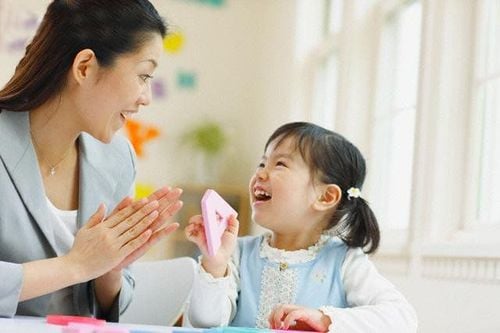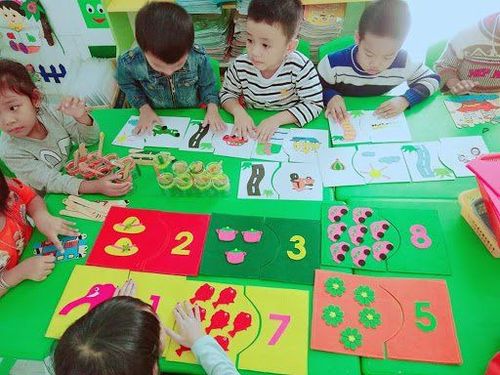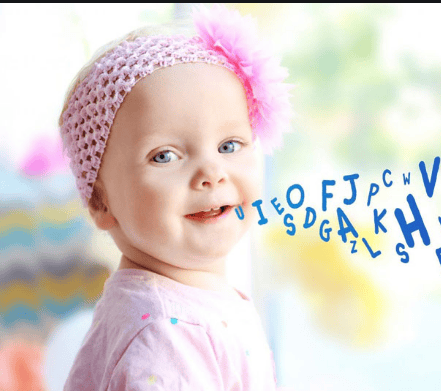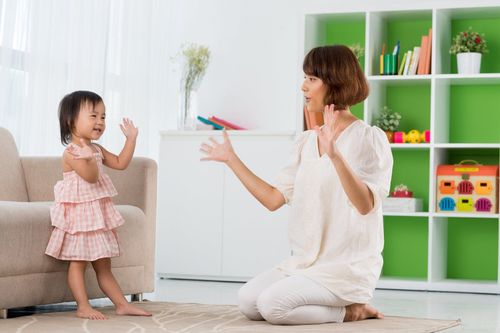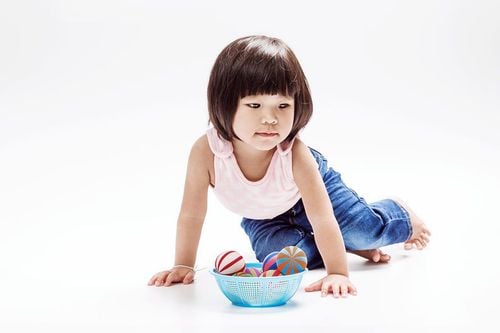This is an automatically translated article.
Children of preschool age are always full of energy. This is a good sign in terms of physical development in children, helping to build large and small muscle groups, as well as adjust the operation of body parts to become more mature.
Here is a list of activities that help promote physical development in preschool children:
1. Go for a walk with the family
Regularly go and jog with your child. Play the game “I Spy” - one person chooses any object seen on the road and gives a hint, the other person guesses the object in question; Or start collecting stones and leaves along the way while walking or jogging with your child to avoid boredom. Even parents should let children throw pebbles into the lake if they have, because this operation also requires children to coordinate many muscles in the body. If playing indoors, create a parade around the house full of musical instruments or flags for extra fun.
2. Play with sand
Fill each toy box with sand to encourage fine motor manipulation.3. Inflatable swimming pool at home

Khi cùng con chơi ởbể bơi mini cần giám sát con liên tục
After inflating the mini pool, you can add paddles, sprinklers, or running water. Play with your child to splash, chase, throw water balloons... Don't forget to supervise your child constantly when he's around the water.
4. Overcoming obstacles
Create an obstacle in the living room or yard, such as cushions, cardboard boxes, toys or other items that your child can run around and climb over.
5. Play pretend
Animals are children's favorites, so quiz them: “Can you walk like a chicken? Gallop like a horse? Imitate puppy actions?” Or encourage your child to "fly" across the yard like an airplane, a superman, or pretend to row a boat across each room.
6. Play sports with your child
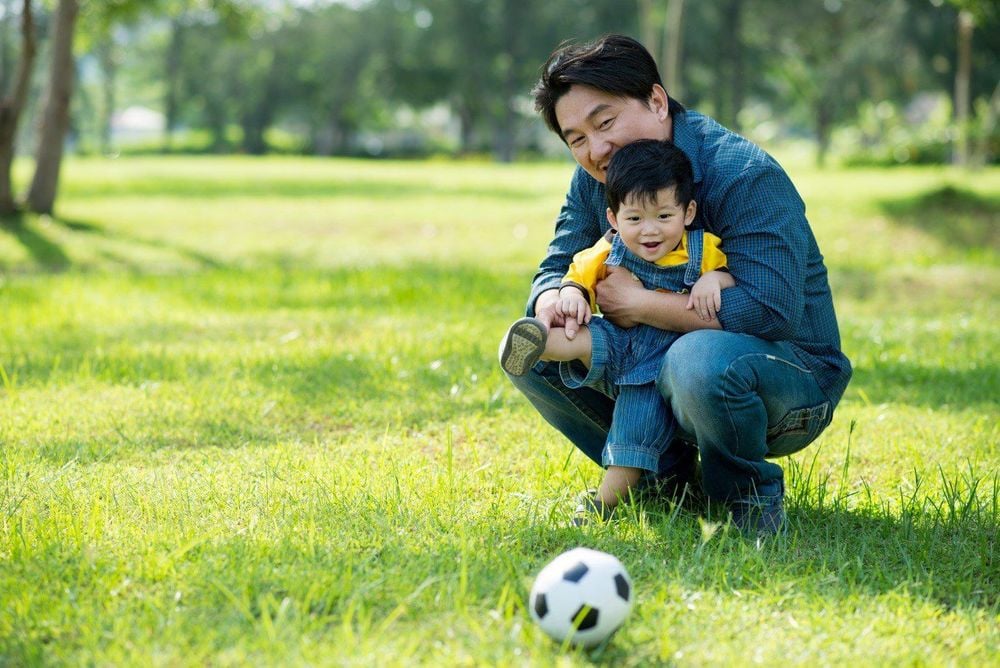
Chơi đá bóng cùng con không nên dạy trẻ quá nhiều quy tắc
Sports games with kids that involve kicking, throwing and catching balls are great practice. Try not to teach preschoolers too many rules, don't put too much emphasis on the rules when playing games like football, baseball... instead, let them play freely.
7. Dance to the music
Expose children to different styles of music, especially children's songs that call on them to practice fine motor skills on their hands. In addition, playing musical instruments also enhances physical development in children.
8. Balance game
Place a large rope on the ground and pretend it is a rope crossing a valley or a plank across a river. Ask your child to try to walk on the rope and not touch the floor to develop balance. The “Freeze” game is also a good suggestion. When the music is on, the child has to dance to the beat or just run around, and when the music suddenly stops, the child has to stay in the same position at that moment.
9. Splashing water
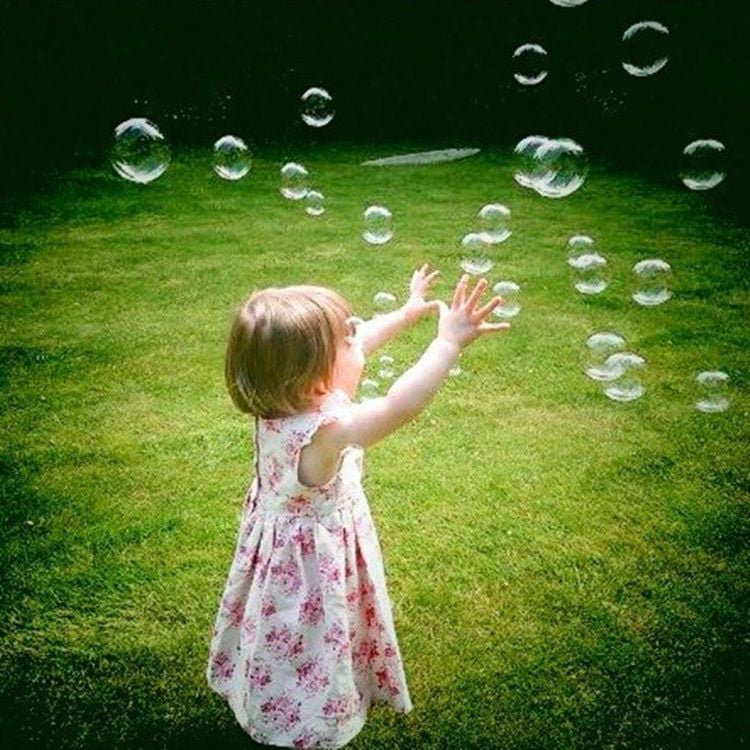
Đa số trẻ thường rất thích chơi bong bóng xà phòng
Let your baby help you wash the car or bathe the dog - anything that involves soap and water bubbles is fun for little ones. While cleaning, blow soap bubbles and let your child try to catch them.
10. Introduce games from your childhood
Although it may be old, everything is new to your child and maybe he or she will love the games: “Green light, red light”, “Circle”, “Globe” or “Dumpling” stork"...
11. Puppetry
Make a sock puppet, with your fingers or using a toy, sit behind the table and perform the puppet show with your child.12. Great drawing

Cho con vẽ một ngôi làng bằng phấn vỉa hè có thể xây dựng các kỹ năng vận động tinh cho trẻ
You can also build fine motor skills by having your child draw a village with sidewalk chalk, use a stick to trace letters in dirt on glass, or trace in flour with your finger or cornmeal.
Gross motor skills will develop first. That's why 2-year-olds - 4-year-olds tend to run, jump, stretch, and move instead of just sitting obediently and using their hand muscles to draw or explore toys. In general, you should spend your child's physical development time on both fine and gross activities.
Spending time playing, early education will help children develop language, motor, thinking and physical abilities later on. Therefore, parents should be creative, spend time playing with their children so that they have beautiful childhood memories as well as form a good personality.
To help children reach important developmental milestones. In addition to the nutritional diet, parents should supplement their children with supporting products containing lysine, essential micro-minerals and vitamins such as zinc, chromium, selenium, and B vitamins to help fully meet their nutritional needs. in children. At the same time, these essential vitamins also support digestion, enhance nutrient absorption, help improve anorexia, help children eat well, and develop comprehensively.
Please regularly visit Vinmec.com website and update useful information to take care of your baby and family.
Reference source: babycenter.com




